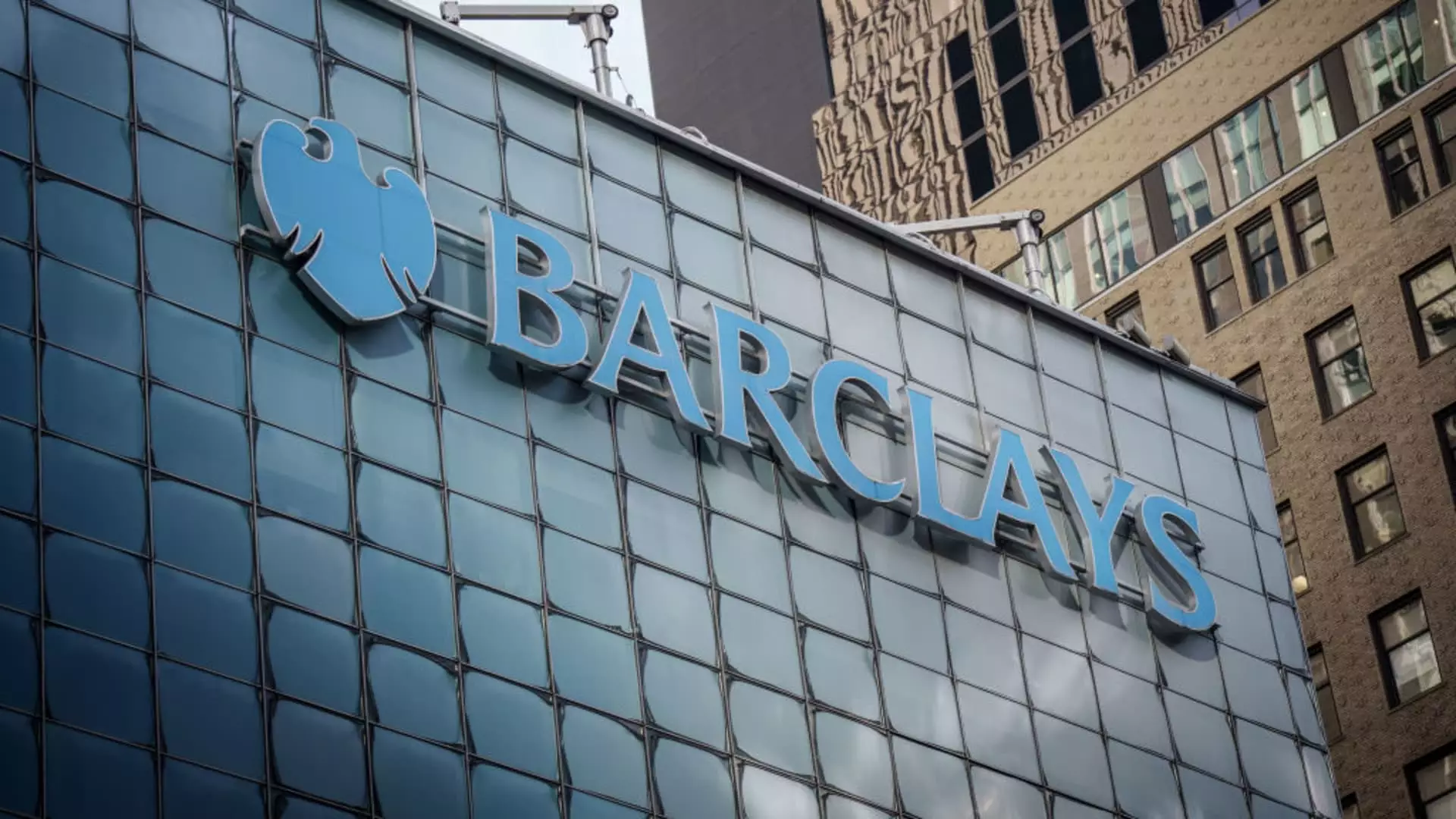In a financial landscape riddled with uncertainty and volatility, Barclays Bank emerges not merely intact but rejuvenated, reporting a remarkable 11% rise in pre-tax profit to £2.7 billion in the first quarter of the fiscal year. Analysts’ projections had anticipated a lower figure, around £2.49 billion, underlining the bank’s capacity to defy market expectations. This performance is largely attributed to the robust performance of its investment banking division, which saw its income increase by an impressive 16% to £3.87 billion. It’s a refreshing reminder that even in a wobbly economy, there exists a strong upward trajectory possible for savvy institutions.
Barclays’ resilience can be tied closely to its return on tangible equity, which surged to 14%, a significant improvement compared to the 7.5% recorded in the previous quarter. This metric stands as a crucial indicator of profitability, putting the bank in a favorable light compared to its peers. Such growth indicates a banking giant that remains undaunted amidst external pressures and trade tensions—a real testimonial to its operational efficiency and strategic acumen.
Investment Banking: The Backbone
The rise in income from Barclays’ investment banking division showcases a larger trend in financial markets: the increasing value of advisory and capital market services amidst economic unpredictability. Under the leadership of CEO C.S. Venkatakrishnan, the bank is not just riding the waves of volatility, but is actively leveraging it to provide risk management solutions to clients. Speaking on CNBC’s “Squawk Box Europe,” Venkatakrishnan acknowledged that while current market conditions may appear calmer, investors should brace for greater fluctuations ahead. This proactive approach is indicative of Barclays’ positioning itself as a key player in helping clients navigate the often treacherous waters of financial markets.
As economic uncertainties loom, including the repercussions of U.S. trade tariffs initiated by the Trump administration, Barclays’ expertise becomes an invaluable asset. Investors are particularly keen on how the bank will manage its considerable exposure to U.S. markets, especially given its historical acquisition of Lehman Brothers’ assets following the financial crisis.
Strategic Growth in Consumer Banking
In addition to its impressive investment banking results, Barclays has also made noteworthy progress in its consumer banking sector. The U.S. consumer bank unit has achieved a return on tangible equity of 9.1% in 2024—almost a doubling from 4.1% in 2023. Such an accomplishment marks a significant turnaround and signifies a formidable growth strategy. However, profits before tax did see a 7% decline, highlighting that growth often comes with its own set of challenges. Nevertheless, increased income to £864 million in the first quarter illustrates an upward trend that bodes well for the bank’s overall stability.
The UK consumer banking unit also showed resilience, reporting an income increase of 12% to £484 million and a remarkable 23% jump in pre-tax profits to £207 million. The successful acquisition of Tesco Bank has been pivotal in fostering this growth, demonstrating the importance of strategic mergers and acquisitions in boosting market share and profitability.
Addressing Global Economic Woes
Despite its impressive performance, Barclays is not immune to the larger economic landscape. While there are optimistic signs, such as new trade opportunities following Brexit, the global economic slowdown casts a looming shadow over its prospects. The broader ramifications of reduced global trade and growth could test the sturdiness of Barclays’ recent gains. Venkatakrishnan has candidly noted the need for the bank to prepare for a range of scenarios, emphasizing that while the starting point may be positive, impending economic challenges necessitate a scrupulous approach.
This caution is further contextualized by the tumultuous shifts within the banking sector as demonstrated by HSBC’s move to wind down its M&A and capital markets businesses, and Banco Santander’s impending branch closures in the UK. These decisions reflect an industry-wide reevaluation of priorities, illustrating the tightening grip of economic pressures across Europe and North America.
In this dynamic environment, Barclays’ well-rounded performance is a beacon of hope against the odds, illustrating that strategic foresight combined with an adaptable business model can yield fruitful results even when the storm clouds gather. However, the bank must remain vigilant and prepared for future uncertainties that could arise from both domestic and international markets.

